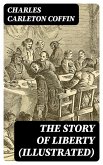In "Beauty: Illustrated Chiefly by an Analysis and Classification of Beauty in Woman," Alexander Walker delves into the intricate interplay of aesthetics and societal perceptions of beauty. The text is notable for its pioneering approach to categorizing beauty, blending philosophical inquiry with vivid illustrations that enrich the narrative. Walker employs a meticulous analytical style that reflects the cultural context of the early 19th century, where beauty became a subject of scientific scrutiny and artistic fascination. His exploration navigates both the subjective and objective elements of beauty, seeking to establish a framework for understanding its significance in women's representation and cultural ideals. Alexander Walker, a Scottish author and advocate for the aesthetic arts, draws on his experiences and observations from a rapidly changing society. Influenced by the Romantic ideals of the time, Walker's work reflects a deep engagement with both art and science, as he seeks to unify these fields through the study of beauty. His commitment to exploring the aesthetic qualities of women is likely informed by his insights into societal norms, as well as a devotion to the artistic traditions that prioritize beauty in female form. "Beauty: Illustrated Chiefly by an Analysis and Classification of Beauty in Woman" is essential reading for those intrigued by the intersections of art, philosophy, and cultural studies. Walker's thorough examination not only informs our understanding of beauty but also invites readers to consider how these ideals shape and reflect societal values. This book is a valuable resource for anyone interested in the evolution of aesthetic thought and the representation of women in art.
Dieser Download kann aus rechtlichen Gründen nur mit Rechnungsadresse in A, B, BG, CY, CZ, D, DK, EW, E, FIN, F, GR, H, IRL, I, LT, L, LR, M, NL, PL, P, R, S, SLO, SK ausgeliefert werden.









